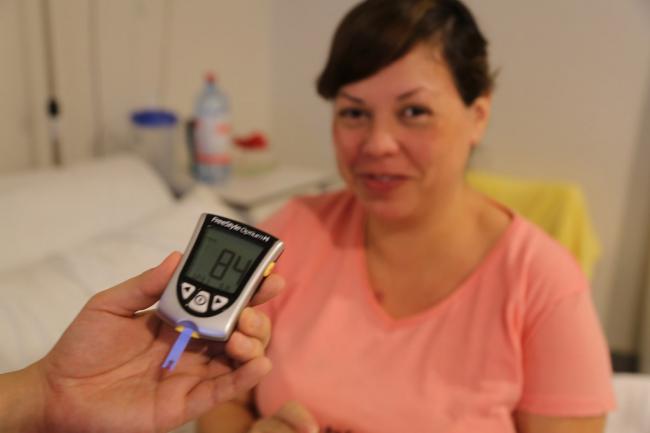
Researchers develop 'comorbidity network' for chronic disease
Sydney, May 7 (IBNS): Sydney researchers believe untapped medical records could be used to predict when a person is at risk of developing type 2 diabetes (T2D).
In a new study published in the International Journal of Medical Informatics, researchers from the University of Sydney and the Capital Markets Cooperative Research Centre (CMCRC) analysed 1.4 million admission records from nearly 1 million de-identified patients using routinely collected administrative healthcare data. The dataset was then filtered and sampled to obtain a cohort of 2300 diabetics and 2300 non-diabetic patients.
Using advanced data mining and network analysis techniques, the researchers evaluated the health of the cohort and developed a ‘comorbidity network’ – a way of visualising the health journey of the T2D patients.
As shown in the image above, this network models the relative prevalence of T2D comorbidities – additional diseases or disorders co-occurring with a primary disease (T2D in this case) – and their transition patterns, thereby representing T2D progression.
In the network image, the size of the nodes (circles) and labels are proportional to the prevalence of corresponding health conditions. Nodes marked in the same colour belong to same clusters of related health conditions. Arcs, in clockwise direction, indicate transition from one health condition to another.
The researchers found that, over time, prevalence of comorbidities in the group of diabetic patients was almost double that of the non-diabetic patients over time, indicating entirely different ways of disease progression.
“It is well known that chronic diseases such as T2D do not occur in isolation, and have a shared set of causes common to many other diseases and disorders,” said study lead author Arif Khan, a postdoctoral researcher from the Centre for Complex Systems in the Faculty of Engineering and Information Technologies.
“Chronic diseases like T2D progress slowly and, in many cases, patients are unaware of their condition. When they are admitted in to hospital for any incidence, T2D often comes up as secondary diagnosis. This makes the overall treatment plan more complex, increasing ‘Length of Stay’ in hospital and cost.
“The aim of our research is to understand how this health trajectory differs between T2D and non-T2D patients with the help of comorbidity network.”
Study co-author Dr Shahadat Uddin, also from the Centre for Complex Systems and the Charles Perkins Centre, said the comorbidity network could help healthcare providers proactively identify patients at higher risk of developing chronic disease.
“By using existing administrative healthcare data – which are routinely collected but often neglected in health research – we have been able to understand the ‘disease footprints’ left by chronic patients,” Dr Uddin said.
“These insights can subsequently help healthcare providers to better understand high-risk diseases and to formulate appropriate preventive health policies,” added study co-author Dr Uma Srinivasan from the CMCRC.
The researchers predicted their ‘comorbidity network’ could also be used effectively to monitor other chronic diseases, such as cardiovascular diseases.
The dataset used for this study was provided by data custodians Capital Markets CRC Ltd. and HAMBS Ltd.
Image: Wikimedia Commons
Support Our Journalism
We cannot do without you.. your contribution supports unbiased journalism
IBNS is not driven by any ism- not wokeism, not racism, not skewed secularism, not hyper right-wing or left liberal ideals, nor by any hardline religious beliefs or hyper nationalism. We want to serve you good old objective news, as they are. We do not judge or preach. We let people decide for themselves. We only try to present factual and well-sourced news.







